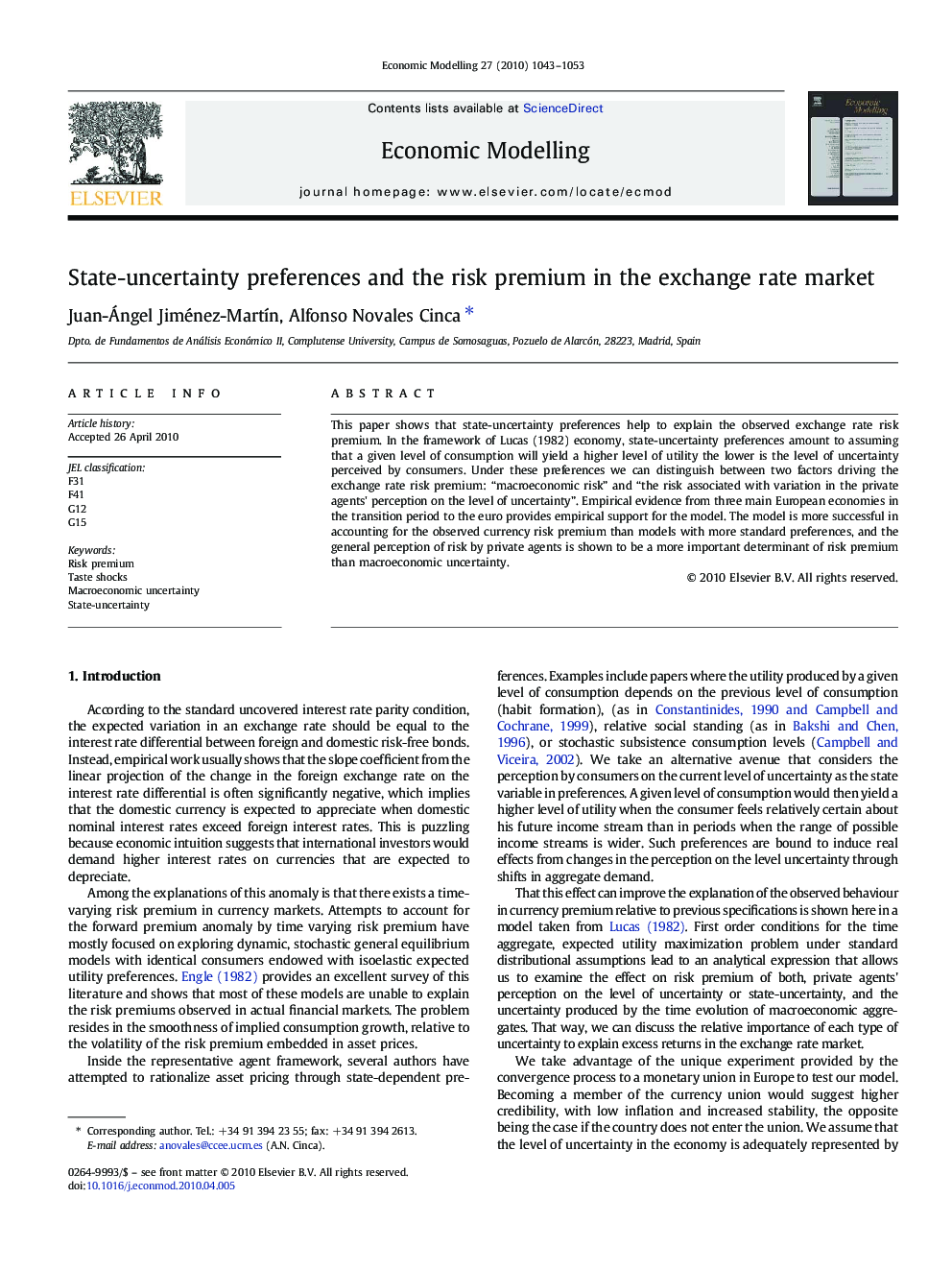| Article ID | Journal | Published Year | Pages | File Type |
|---|---|---|---|---|
| 5055238 | Economic Modelling | 2010 | 11 Pages |
This paper shows that state-uncertainty preferences help to explain the observed exchange rate risk premium. In the framework of Lucas (1982) economy, state-uncertainty preferences amount to assuming that a given level of consumption will yield a higher level of utility the lower is the level of uncertainty perceived by consumers. Under these preferences we can distinguish between two factors driving the exchange rate risk premium: “macroeconomic risk” and “the risk associated with variation in the private agents' perception on the level of uncertainty”. Empirical evidence from three main European economies in the transition period to the euro provides empirical support for the model. The model is more successful in accounting for the observed currency risk premium than models with more standard preferences, and the general perception of risk by private agents is shown to be a more important determinant of risk premium than macroeconomic uncertainty.
